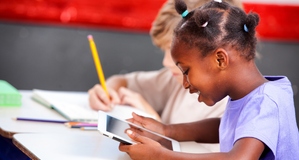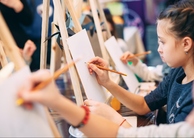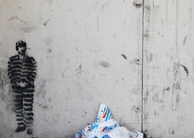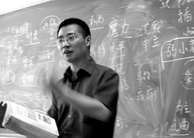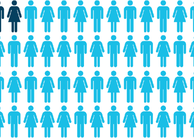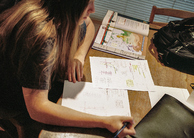Challenges Faced by "Gifted Learners" in School and Beyond
By
2010, Vol. 2 No. 11 | pg. 1/1
KEYWORDS:
Gifted learners, although possessing higher levels of intelligence than their peers, are disadvantaged in the sense that they frequently do not, or are not given the opportunity, to reach their full potential (Farmer, 1993). Krause, Bochner and Duchesne (2003:212) report that gifted learners are labeled, along with ‘gifted’, ‘talented’ or ‘creative’, as ‘underachievers’, ‘educationally disadvantaged’ or ‘special needs.’ This is primarily because schools and teachers are unaware of how to appropriately cater to these learners (See Diezmann & Watters, 2001; Langrehr, 2006). The gifted learner is traditionally identified with a higher-than-average score on an Intelligence Quotient (IQ) test. Krause et al. (2003) report that the gifted learner is typically within the top 2% of standardized IQ scores – in other words, possesses an IQ of approximately 130+. Langrehr (2006) rejects the intelligence quotient method, proposing a series of tests that measure what he terms ‘multiple-answer thinking.’ He argues that the gifted child should be assessed on how well they can escape the dominant patterns stored in the brain – how well they display ‘creative-critical thinking. Recognizing the gifted student then, is the first area where the education system disadvantages this group. Gifted children have special learning needs, which if not met, can lead to frustration, a loss of self-esteem, boredom, laziness and underachievement (Crocker, 2004; after Knight & Becker (2000)). If the gifted child is not recognized, he or she quickly becomes bored and disinterested with the content taught. Diezmann and Watters (2006:3) state: ‘gifted students have an advanced knowledge base compared to their non-gifted peers… Thus, what is initially new content for non-gifted students might be only practice material for gifted students.’ If the gifted student is not identified, they quickly surpass their non-gifted classmates and become accustomed to a relaxed approach to learning, which can create serious learning difficulties when confronted with difficult and complex material in higher studies (Diezmann & Watters, 2006).The failure to identify the gifted child is further compounded by disagreement over exactly what constitutes ‘gifted’. Langrehr’s (2006) challenges the ‘higher-intelligence’ method, and he further suggests that there are different categories of ‘Giftedness,’ primarily highlighting the difference between the creative mind and the critical mind – Langrehr suggests that these two mindsets, although markedly different, need to be treated as equally gifted. Once the gifted child has been identified and placed into a higher streaming class, there emerges the problem of the gifted learners self-esteem and self-concept. Yeung, Chow, Chow and Liu (2005:1) report that: “…gifted students and high achievers will experience an enhanced school self-concept due to the BFLP (big fish, little pond) effect through a comparison with their average-ability peers, their school self-concept will be lowered due to an assimilation effect when they affiliate themselves with their less able peers.”In other words, gifted students consciously place themselves at a higher level than their non-gifted peers, whilst simultaneously realizing the difference between the two. Diezmann, Watters and Fox (2001:3) claim that gifted children experience: “socio-emotional problems that include difficulty with social relationships, isolation from peers, pressures to conform, resistance towards authority, refusal to complete routine and repetitious work, and frustration with every day life (after Davis & Rimm, 1998).” They also note that these problems are frequently not resolved by school-leaving age, and may persist into later studies and life. Berger (2006) addresses the issue of gifted student’s self-concept, claiming that due to gifted student’s tendency to be a late-bloomer, combined with their sensitivity to higher expectations and uneven social development can create a sense of displacement or dissonance. These feelings can compound in later life beyond school, ranging from underachievement to depression and more serious disorders (Hewitt and Dyck, 1996; Rasmussen and Eisen, 1992; cited by Kesner, 2005). ‘A student’s level of social and emotional maturation may not keep pace with his or her advanced intellectual development’ (Berger, 2006:150) – it is this social experience, attained through peer contact that many primary and secondary Gifted and Talented programs neglect or overlook. During schooling years, the gifted child is frequently undertakes ‘unnecessary practice’ of content, as they achieve mastery sooner than their ‘non-gifted’ peers do. (Diezmann & Watters, 2006) The Gifted learner is characterized by an ability to rapidly acquire new content, advanced reasoning, higher maturity than age peers, and heightened awareness of their surroundings and feelings (Deizmann, Watters & Fox, 2001). The unfortunate fact is that these capabilities are frequently either not noticed, or not fully utilized in the standardized curriculum. Even if the system successfully identifies the gifted learner, places them in an appropriate Gifted and Talented program, assists them to realize their concept-of-self and brings them through school with excellent results, one major problem still awaits the student. Gifted learners are frequently offered the advice ‘You can be anything you want.’ This may seem desirable for the learner, but for many, this plethora of opportunities is a major crisis. Berger (1989) raises this issue, coining the term multi-potentiality, where the highly capable student participates in many different activities to satisfy their interest. She states that ‘on vocational exploration tests, [gifted students] often show a high, flat profile; that is, high aptitudes, abilities and interests in every area’ (Berger, 2006:150). As Berger points out, attempting to maintain such a busy schedule in college or university life can potentially create a ‘destructive academic and emotional environment’ (150). There are many challenges facing the gifted learner, as well as their educators. The core issue is that gifted students are different from their non-gifted peers, and need to be treated and taught using separate, often accelerated, methodology and pedagogy. Kesner (2005:219) suggests that for the educator ‘developing a secure relationship with gifted children is critical and at the same time more difficult than doing so with their non-gifted counterparts.’ Teachers of gifted and talented students need to not only create a social relationship, but also a quasi-professional academic relationship with their students. As Kesner notes: “Children are dependent upon their teacher for… provision of appropriate academic challenges [in the classroom]. Gifted students, by virtue of their advanced intellectual capabilities may be even more dependent upon the teacher to provide for their specific academic needs.” (Kesner, 2005:222) Berger (1989) reports that there are many options available to gifted students to explore social interaction with both age and intellectual peers, as well as possibly finding mentors. She states that the broad spectrum of intellectual, academic and social experience required by the gifted student can only be achieved through the coordinated efforts of the family, the school, and supplemental (gifted and talented) programs. The tendency for gifted students to display multi-potentiality and the tendency for perfectionism can be combated through teaching study skills and academic planning in gifted and talented programs, alongside course content (See Berger, 1989; Diezmann et al., 2006; Crocker, 2004). Providing gifted students with the opportunity to explore further study or career options after school may help give them a ‘sense of direction’ (Berger, 1989). It is an unfortunate paradox that the gifted child is often considered at a disadvantage to their non-gifted peers, and this essay holds that it is a failing of the educational system to identify, educate and support these students in a suitable fashion. The gifted student must be given these resources and opportunities if they are to have equal opportunities in ‘life beyond school.’
Berger, S.L. (1989) College Planning for Gifted Students. [Online.] Council for Exceptional Children, 1989. Available from:http://ceep.crc.uiuc.edu/eecearchive/books/fte/except/berger.pdf(Accessed: 2 Oct 2006) Crocker, T. (2004) “Underachievement: Is our vision too narrowed and blinkered? ‘Fools step in where angels fear to tread.” in Gifted 131:10-14 Diezmann, C.M and Watters, J.J. (2006) “Balancing Opportunities for Learning and Practicing for Gifted Students” in Curriculum Matters 5(1):3-5. Diezmann, C.M., Watters, J.J., and Fox, K. (2001) “Early entry to school in Australia: Rhetoric, research and reality” in Australasian Journal for Gifted Education 10(2):5-18. Farmer, D. (Ed.) (1993) Gifted Children need help? A guide for parents and teachers. Strathfield: NSW: NSW Association for Gifted and Talented Children. Kesner, J.E. (2005) “Gifted children’s relationships with teachers” in International Education Journal, 6(2):218-223. Krause, K., Bochner, S., Duchesne, S. (2003). Educational Psychology for learning and teaching. Southbank, Victoria: Thomson. Langrehr, J. “New ways for identifying gifted thinkers.” in Gifted 140:11-14. Yeung, A.S.; Chow, A.P.Y.; Chow, P.C.W. and Liu, W.P. (2006) “Self-concept of gifted students: the reddening and blackening effects” in AARE 2005 International education research conference: UWS Parramatta: papers collection. [Conference of the Australian Association for Research in Education, 27 November – 1 December 2005. Compiled by PL Jeffrey, Association for Research in Education. Melbourne: Australia. See also:Jewell, P. (2005) “Humor in cognitive and social development: Creative artists and class clowns” in International Education Journal, 6(2):200-205. Suggested Reading from Inquiries Journal
Inquiries Journal provides undergraduate and graduate students around the world a platform for the wide dissemination of academic work over a range of core disciplines. Representing the work of students from hundreds of institutions around the globe, Inquiries Journal's large database of academic articles is completely free. Learn more | Blog | Submit Latest in Education |









